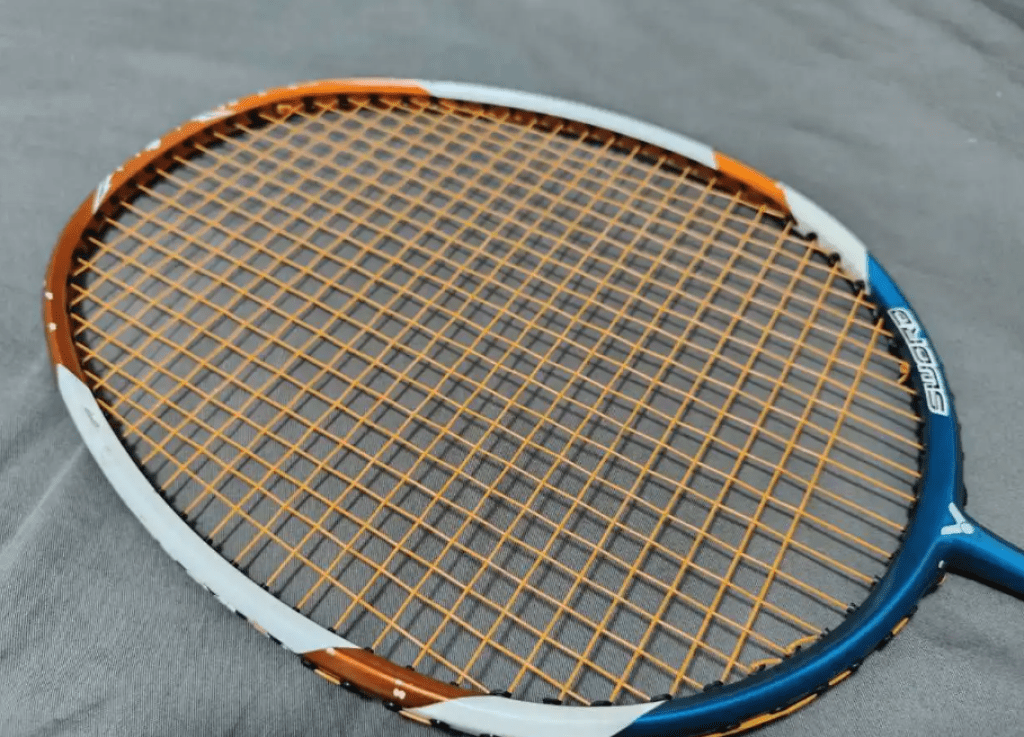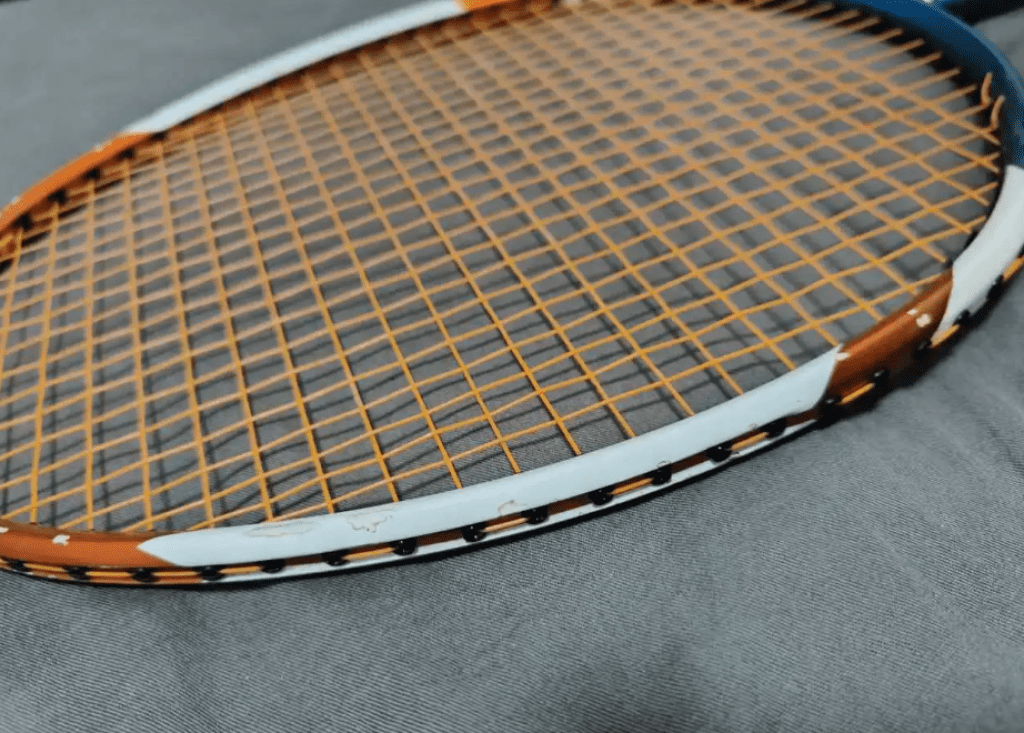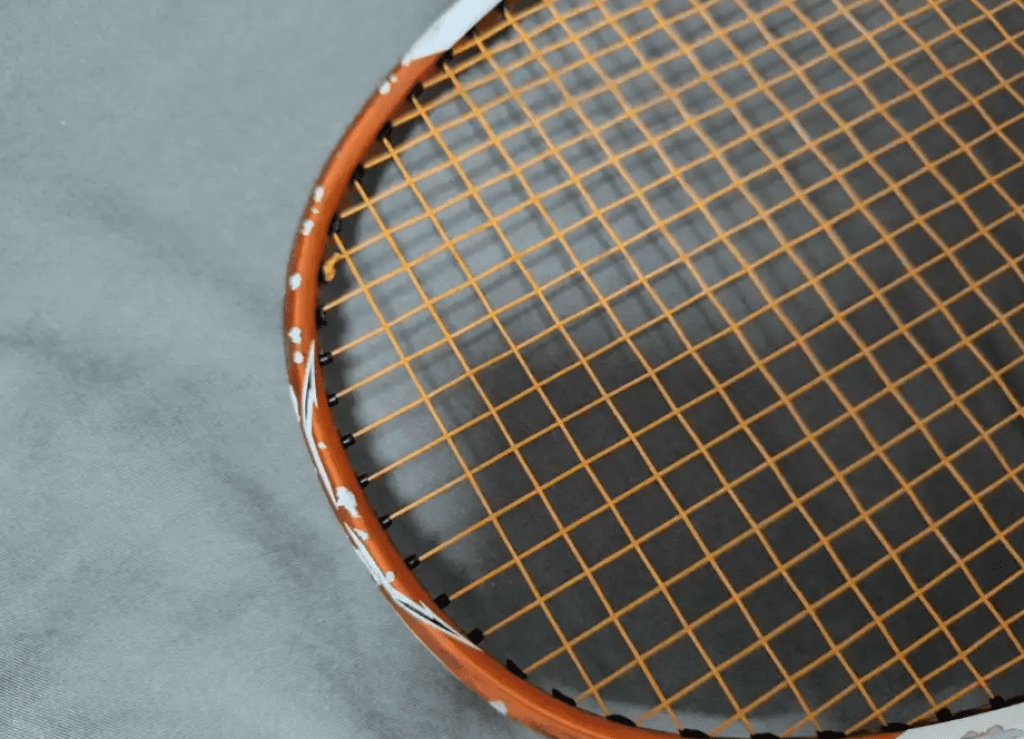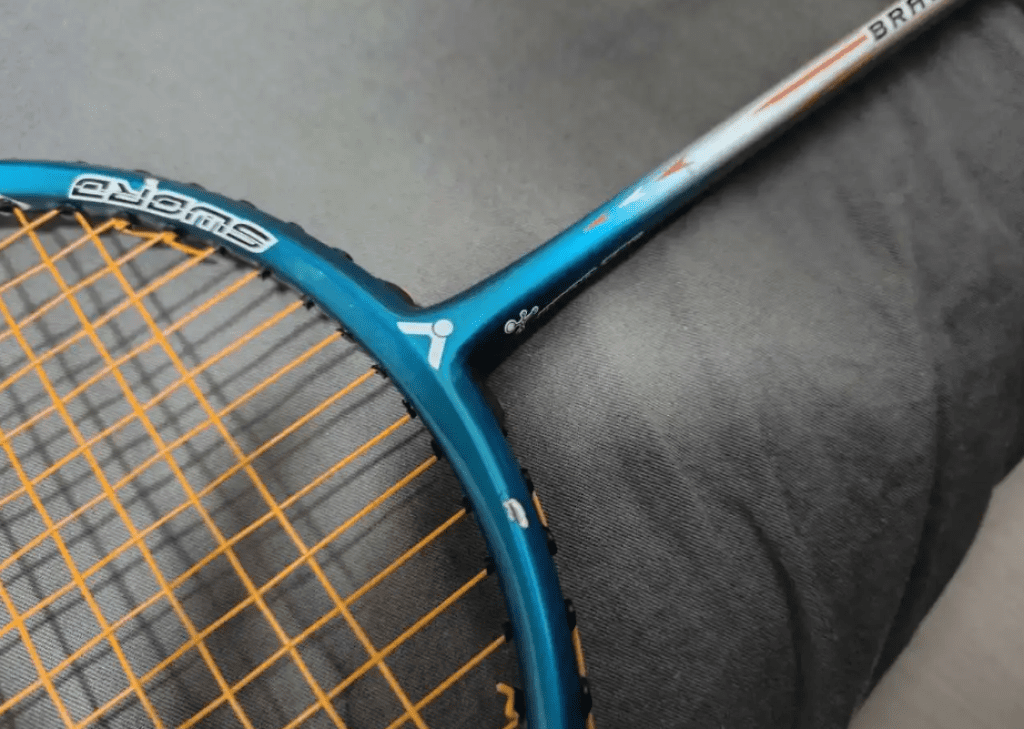As a “grave digger,” I’ve now extended my business to include the Super Waves and BRAVE SWORD series.
Models 168 and 169 are the only two remaining BRAVE SWORD series rackets positioned in the high-end segment, with noticeable differences in their tuning styles. After trying out the 168, I suspect that collecting slightly lower-end models like the 150/170 will be even more challenging, so I’ll have to take it step by step.

Specifications: 3UG5, no cap, total weight 91.94g, balance point 336mm, shaft length 215mm, medium-high stiffness, diamond wind-break frame, 72-hole string bed, 9-3 o’clock string grommets, warranty up to 26 lbs, strung with 26 lbs VBS66N.
Compared to the more feminine color scheme and design of the 169, the 168 is much more masculine. The racket’s paint job is primarily blue and white, similar in style to the 169 but with different colors. There’s a black and white square at the base of the shaft, though I’m not sure of its purpose. Other than that, there’s not much to say about the appearance without repeating myself. However, I have to complain again about the BRAVE SWORD series’ paint quality—it chips easily. I’m not sure if it’s just my racket, but it seems to suffer from the same issue as the JETSPEED 10, with the T-joint paint cracking easily.

Seeing the specs, many players might be shocked by the balance point after removing the cap, as was the previous seller who warned me that this racket is a wrist-breaker. Upon first handling it, I was reminded of the BRAVE SWORD 09, which also has a significant head-heavy feel and a hefty swing weight. However, the wind-breaking effect of the BRAVE SWORD series is well-known, so I didn’t encounter any difficulties in generating power during use. The strong head weight provides excellent power transfer, making it easy to clear the shuttle far with almost anyone, especially when both players are feeding the shuttle accurately.

There’s no need to analyze the power from an elasticity perspective for this BRAVE SWORD. Its inherent characteristics naturally result in shots with substantial weight.
The downside is also apparent: using the 168 significantly increases the physical burden. Aside from potential injuries caused by the increased swing weight, it also places a considerable strain on the user during prolonged rallies. To maintain high-quality rallies with the 168, the user’s physical fitness must be quite high. Several times, after intense rallies, my forearm felt sore.

Additionally, the increased swing weight reduces agility, making the low-profile frame’s benefits less noticeable in flat drives. The heavy frame lengthens the preparation time, and short bursts of power don’t feel great. In fast-paced mid-court exchanges, its continuity ranks among the lowest in the BRAVE SWORD series. This also led me to adopt softer blocks and drops when faced with pressure from the opponent.
With poor continuity, the focus naturally shifts to the quality of individual attacks. The racket’s natural smash feeling is substantial and satisfying. Even when not fully powered, it can produce sharp, soft smashes or drop shots with precise placement. However, when I had ample time in the backcourt to fully unleash a smash, I noticed a slight power loss at the racket face, reflecting a common issue with the 169.

Perhaps switching to a stiffer string might directly address the issue of the racket face not delivering enough force. But the 168 allowed me to execute deceptive kills that exceeded my expectations. The shots had unexpected suddenness and sharpness, often allowing me to target the opponent’s weaker partner during sustained rallies or semi-opportunities for effective pressure training.
Of course, after executing many of these deceptive kills, I noticed that my wrist and arm felt more fatigued than usual after the game. It seems that the surprise performance was achieved at the cost of improper technique, so it’s not exactly a legitimate gain. Additionally, I shouldn’t set such high expectations for the racket’s performance under passive situations. When I was repeatedly stretched to the corners by the opponent, the 168’s relatively forgiving face allowed me to make life-saving transition shots during repeated turns, but hitting a solid, relieving shot was challenging, especially when receiving backhand shots where it tended to produce half-court, half-high returns, making it awkward to generate power.
Oddly enough, the 168 still belongs to the “sugar water” category of rackets, but with a personality akin to a hardcore music enthusiast—it occasionally bursts out with death metal. This gives it a unique character, and I love it.

Leave a Reply